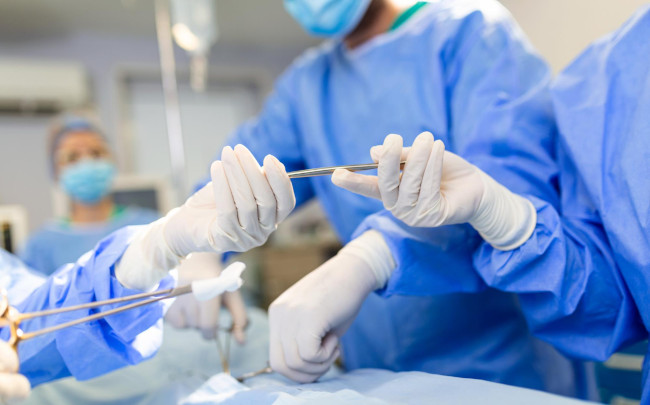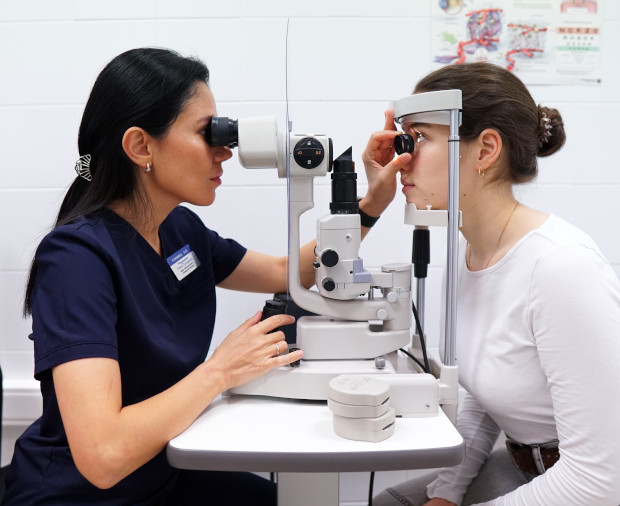Umbilical hernia removal
A hernia in the navel area is a pathology accompanied by weakening and expansion of the umbilical ring with the exit of the hernial sac with internal organs (usually a segment of the intestine) into the subcutaneous space. Among all types of hernias, the umbilical hernia is the most common and occurs equally often in both men and women, sometimes even in children from birth.
Doctors of the surgery department of the K+31 clinic conduct diagnostics and operations to remove an umbilical hernia using modern and highly effective methods.

specialists

equipment

treatment
Classification and symptoms of umbilical hernia
Externally, the hernia looks like an enlarged and protruding navel. At an advanced stage, the hernial sac can reach large sizes. The protrusion of the hernia is accompanied by pain (pulling, burning, dull). In the lying position, the bulge decreases in size and can completely disappear.
At the initial stage, the hernia is easily reduced and does not cause discomfort. Over time, the muscle layer weakens and the hernial orifice expands. In this case, the patient feels pain when lifting weights or when straining the press. The pathology quickly progresses and without timely treatment goes into a severe stage. Side symptoms include nausea, bloating, intestinal colic and constipation.
With large umbilical hernias, the patient cannot always reduce it on his own and the risk of strangulation increases. In this case, the hernial sac with internal organs is pinched in the muscles of the hernial orifice, which causes severe pain and impaired blood circulation in the pinched area. Without timely surgery, complications such as peritonitis, acute intestinal obstruction and necrosis of the pinched organs develop.

The following types of umbilical hernias are distinguished:
- by frequency of occurrence primary and secondary (recurrence after previously performed hernioplasty)
- by severity reducible and non-reducible
- by cause of occurrence congenital and acquired
- by the presence of complications strangulated and non-strangulated
- by shape straight (the hernial sac comes out directly from the navel) and oblique (rupture of the abdominal wall near the navel, but the hernial sac comes out through the umbilical ring)
Advantages of laparoscopic hernioplasty

There are two main ways to eliminate a hernia: abdominal surgery with a skin incision and laparoscopic (through small punctures in the abdominal wall). The choice of method depends on the condition of the muscular-aponeurotic layer of the peritoneum and the type of hernia itself.
Primary pathology is usually eliminated using laparoscopic hernioplasty. Advantages of the method:
- During abdominal surgery, the doctor makes three small (0.5-1 cm) incisions to install medical equipment tubes, so the postoperative wounds are small, heal quickly, and the scars are invisible
- High precision of the operation, thanks to control of all the surgeon's actions on the monitor through a camera installed inside the laparoscope
- Short rehabilitation period
- Reduced risk of internal bleeding, infection, and relapse
Laparoscopic hernioplasty is a minimally invasive technique that shows good results, preserving the integrity of soft tissues. It has fewer postoperative complications compared to the abdominal method.
Open surgery in the classical way with an external incision is performed for repeated surgical interventions if a relapse has occurred. Also, abdominal surgery is performed in emergency cases, when the hernial sac has already become strangulated and tissue necrosis has begun.

This award is given to clinics with the highest ratings according to user ratings, a large number of requests from this site, and in the absence of critical violations.

This award is given to clinics with the highest ratings according to user ratings. It means that the place is known, loved, and definitely worth visiting.

The ProDoctors portal collected 500 thousand reviews, compiled a rating of doctors based on them and awarded the best. We are proud that our doctors are among those awarded.
Make an appointment at a convenient time on the nearest date
Price
Other services
































































Why do umbilical hernias form?
A hernia appears due to weakening of the muscular-aponeurotic layer under the skin and expansion of the natural muscular ring around the navel. The exit of internal organs from the umbilical ring is provoked by movement, tension of the abdominal muscles and an increase in intra-abdominal pressure when coughing, straining, lifting weights.
Both internal and external factors contribute to the appearance of a hernia:
Congenital hernia occurs in children, which in some cases disappears on its own, without surgical intervention.